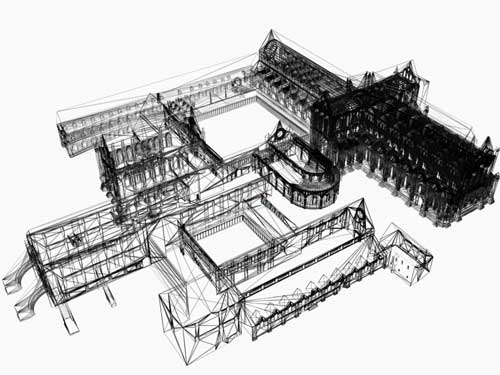 |
 |
 |
 |
 |
 |
 |
|
Rievaulx Abbey
The abbey of Rievaulx was founded as the first Cistercian outpost in the North, and was to be a centre for White Monks to reform and colonise the North of England and Scotland. Its foundation was instigated by Bernard of Clairvaux and planned with military precision. The abbey attracted-profile benefactors such as Henry I and David of Scotland, and a number of recruits from the locality and further afield. The most prominent recruit was Aelred of Rievaulx, who was abbot from 1147 until 1167.
Rievaulx was intended to be as a mission centre from which the White Monks successfully spread across the country. By the thirteenth century Rievaulx had founded a family of no less than nineteen abbeys.(2) Rievaulx was renowned for its sheep-farming and export of wool, but the abbey was also an active patron of culture. Rievaulx's fortunes changed from the late thirteenth century, when the abbey suffered severe financial problems: war, famine and plague. By the time of the Dissolution in 1538 the community numbered twenty-three. The impressive ruins at Rievaulx include extensive remains of the church, which was one of the finest in the North, and claustral buildings; five arches from the original cloister survive. On the pages that follow you can read about the abbey’s history, lands and buildings and go on a tour of the site. In the near future you will be able to tour the models we have built of the church and the monastic precincts. |

